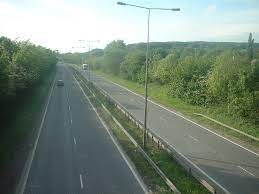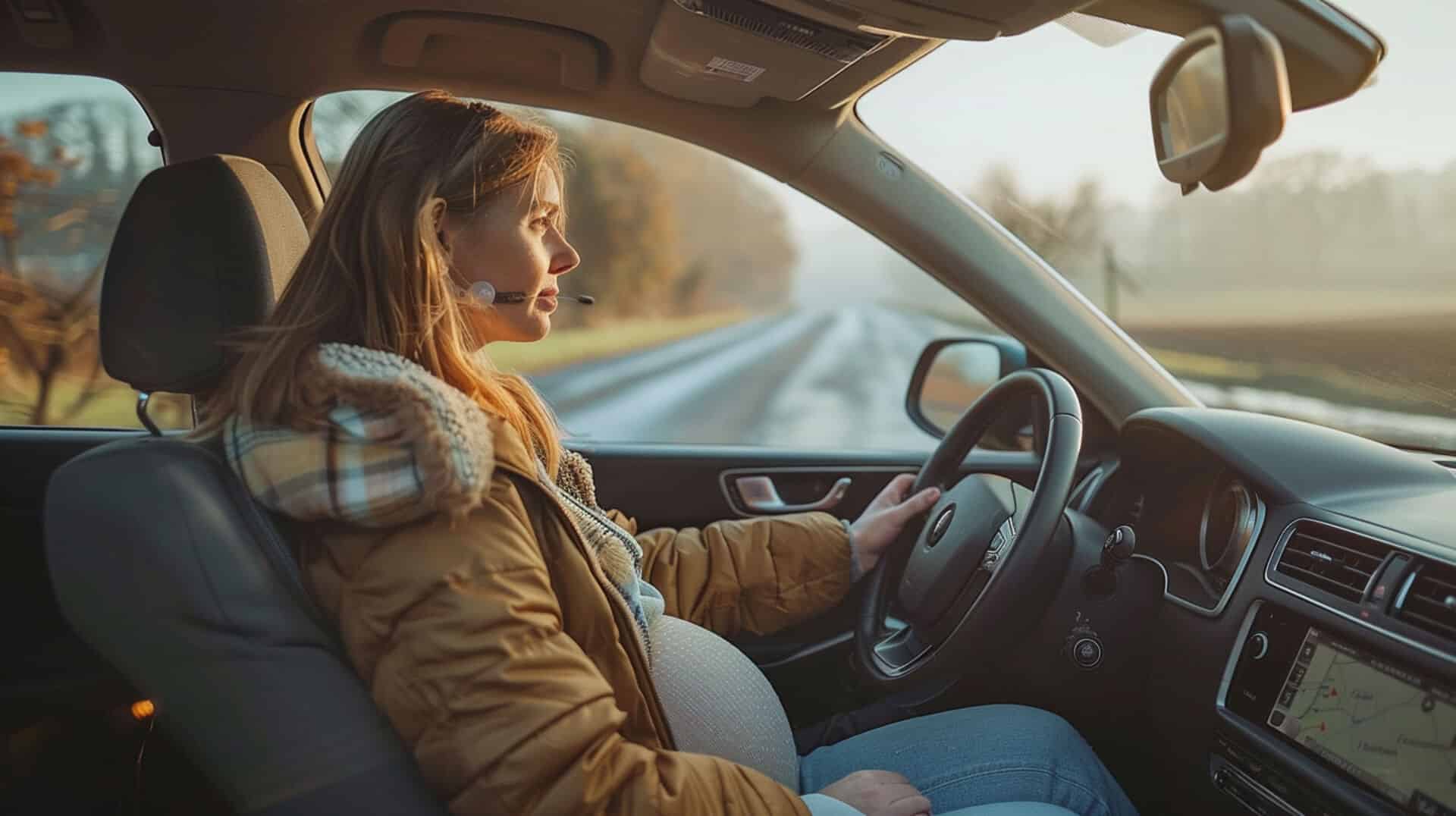
What is MSPSL and why is it important for UK learner drivers and qualified drivers?
Definition of MSPSL and its significance in driving
MSPSL stands for Mirror, Signal, Position, Speed, and Look. The MSPSL routine is an extension of the familiar MSM routine and is used to safely approach junctions, roundabouts, crossroads, and other driving situations.
The five basic elements of MSPSL are as follows:
- Mirror: Before approaching any kind of junction, drivers should cheque their interior mirror and then cheque their left or right door mirror for a left or right turn. It is important to take notice of what is seen in the mirrors, rather than just looking at them. Checking the mirrors allows drivers to be aware of the surrounding traffic and potential hazards.
- Signal: Drivers should indicate their intentions to other road users by signalling in the appropriate way for left and right turns, roundabouts, and junctions. Signals should be given at the right time, as signalling too late or early can be more hazardous than not signalling at all. signalling helps other road users anticipate the driver’s actions and promotes safer interactions on the road.
- Position: Road positioning involves more than just which lane the driver is in. The driver should position their car in the middle of the lane, unless turning right, when they should be positioned closer to the right side of the lane. Proper positioning ensures that the driver has enough space to manoeuvre and minimises the risk of collisions with other vehicles.
- Speed: Adjusting the speed appropriately is crucial for safe driving. Drivers should reduce their speed when approaching junctions, roundabouts, or any situation that requires a change in direction. Adapting the speed allows drivers to have better control over their vehicle and react to unexpected situations.
- Look: Before making any manoeuvres, drivers should look in the direction they intend to go. This includes checking blind spots, looking for pedestrians, cyclists, or any potential hazards. Looking ensures that drivers have a clear understanding of the road conditions and can make informed decisions.
Importance of learning MSPSL for UK learner drivers
Learning MSPSL is of utmost importance for UK learner drivers for several reasons:
- Safety: MSPSL emphasises the importance of checking mirrors, signalling, and being aware of the surrounding traffic. By following this technique, learner drivers can significantly reduce the risk of accidents and ensure the safety of themselves and other road users.
- Compliance with regulations: MSPSL is a recognised driving technique in the UK and is often assessed during driving tests. By learning and practising MSPSL, learner drivers can demonstrate their understanding and adherence to the rules and regulations set by the driving authorities.
- Efficiency: MSPSL helps learner drivers approach junctions, roundabouts, and other driving situations in a systematic and efficient manner. By following the correct sequence of mirror cheques, signalling, positioning, adjusting speed, and looking, learner drivers can navigate these situations smoothly, minimising delays and potential conflicts with other road users.
- Confidence: Learning and mastering MSPSL can boost the confidence of learner drivers. By having a structured approach to driving, they can feel more in control and make informed decisions on the road. This confidence can contribute to safer driving practices and a positive driving experience.
How MSPSL contributes to safe and efficient driving
MSPSL contributes to safe and efficient driving in the following ways:
- Increased awareness: By incorporating mirror cheques and looking into the driving routine, MSPSL promotes a higher level of awareness of the surrounding traffic and potential hazards. This increased awareness allows drivers to anticipate and react to situations more effectively, reducing the likelihood of accidents.
- Clear communication: The signalling aspect of MSPSL ensures that other road users are aware of the driver’s intentions. By signalling at the appropriate time, drivers can communicate their actions and intentions, promoting smoother interactions and reducing the risk of misunderstandings or collisions.
- Proper positioning: MSPSL emphasises the importance of positioning the vehicle correctly on the road. This ensures that drivers have enough space to manoeuvre and minimises the risk of collisions with other vehicles. Proper positioning also helps in maintaining a consistent flow of traffic, contributing to overall road efficiency.
- Controlled speed: Adjusting the speed according to the driving situation is a key aspect of MSPSL. By reducing speed when approaching junctions or roundabouts, drivers have better control over their vehicle and can react to unexpected situations more effectively. This controlled speed promotes safer driving and contributes to the overall efficiency of traffic flow.
In conclusion, MSPSL is a driving technique that encompasses mirror cheques, signalling, proper positioning, adjusting speed, and looking. It is important for UK learner drivers to learn and practice MSPSL as it ensures their safety, compliance with regulations, and promotes efficient and confident driving. By following MSPSL, learner drivers can increase their awareness, communicate effectively with other road users, maintain proper positioning, and control their speed, ultimately contributing to safer and more efficient driving on the roads.
What are the key components of the MSPSL routine?
Explanation of each step in the MSPSL routine:
- Mirror: The first step of the MSPSL routine is to cheque the mirrors. This involves checking the rear-view mirror, side mirrors, and door mirrors. By checking the mirrors, the driver can be aware of their surroundings and any potential hazards. This step allows the driver to have a full view of the road behind them and any vehicles approaching from the side.
- Signal: The second step of the MSPSL routine is to signal. This involves indicating the driver’s intentions to other road users. Signalling should be done in plenty of time before making a manoeuvre and should be cancelled once the manoeuvre is complete. Signalling allows other drivers to be aware of the driver’s intentions and helps to prevent accidents or misunderstandings on the road.
- Position: The third step of the MSPSL routine is to position the vehicle correctly. This involves being in the correct position for the manoeuvre the driver is about to make. It includes positioning the vehicle in the correct lane, maintaining the appropriate distance from other vehicles, and aligning the vehicle properly for the intended manoeuvre.
- Speed: The fourth step of the MSPSL routine is to adjust the speed accordingly. This involves controlling the speed of the vehicle to match the road conditions, traffic flow, and the intended manoeuvre. Adapting the speed ensures that the driver has enough time and space to carry out the manoeuvre safely and smoothly.
- Look: The final step of the MSPSL routine is to look. This involves scanning the road ahead, checking blind spots, and being aware of any potential hazards or changes in the traffic. Looking allows the driver to anticipate and react to any unexpected situations, ensuring a higher level of safety and awareness on the road.
Importance of following each step in the correct order:
Following each step of the MSPSL routine in the correct order is crucial for safe and efficient driving. Each step builds upon the previous one and contributes to the overall driving safety and awareness.
For example, checking the mirrors (Mirror) allows the driver to be aware of their surroundings and any potential hazards. This information is then used to signal (Signal) the driver’s intentions to other road users. By signalling in advance, other drivers can anticipate the driver’s actions and adjust their own driving accordingly.
Once the intentions are signalled, the driver needs to position (Position) the vehicle correctly. This ensures that the driver is in the right position to carry out the intended manoeuvre safely and efficiently.
Adjusting the speed (Speed) is important to match the road conditions and the intended manoeuvre. By controlling the speed, the driver can maintain a safe distance from other vehicles and have enough time and space to complete the manoeuvre smoothly.
Finally, looking (Look) allows the driver to scan the road ahead, cheque blind spots, and be aware of any potential hazards or changes in the traffic. This step ensures that the driver is prepared for any unexpected situations and can react promptly to maintain safety on the road.
How to practice and master the MSPSL routine?
To practice and master the MSPSL routine, there are several effective ways to incorporate it into your driving lessons and everyday driving habits. Here are some detailed explanations and tips for each aspect:
Effective ways to practice the MSPSL routine during driving lessons:
- Understanding the routine: Before you start driving, it is important to have a clear understanding of the MSPSL routine. Ask your instructor to explain each step and how it works. This will help you grasp the concept and purpose of each element.
- Safe environment practice: Begin practising the routine in a safe environment, such as a car park or a quiet road. This will allow you to focus on the routine without distractions or heavy traffic. Repeat the routine at every junction or roundabout to make it a habit.
- Instructor feedback: Ask your instructor to give you feedback on your performance of the MSPSL routine. They can provide valuable insights and help you identify any areas that need improvement. Take their feedback constructively and work on refining your skills.
- Varied driving conditions: practice the MSPSL routine in different driving conditions to enhance your adaptability. This includes practising in different weather conditions, at different times of the day, and on various types of roads. This will help you become comfortable with the routine in diverse situations.
Common mistakes to avoid when practising MSPSL and how to overcome them:
- Neglecting mirror checks: One common mistake is not checking your mirrors before making a manoeuvre. To overcome this, develop a habit of checking your mirrors at appropriate times, such as before signalling or changing lanes.
- Forgetting to signal: Another mistake is forgetting to use your turn signals. To avoid this, make it a habit to always signal your intentions, even if you think there are no other vehicles around. This promotes good driving habits and ensures the safety of others.
- Inconsistent speed control: Inconsistent speed control can be a mistake. practice maintaining a consistent speed and adjust it as necessary to match the road conditions. This helps you stay in control and react appropriately to any situation.
- Lack of awareness: Not being aware of your surroundings is a common mistake. Stay focused and actively observe the road ahead, checking for any potential hazards. Develop a habit of scanning your surroundings regularly to avoid surprises and react in a timely manner.
By following these effective ways to practice the MSPSL routine during driving lessons and incorporating it into your everyday driving habits, you can gradually master the routine and become a safe and responsible driver. Remember to always prioritise safety and be mindful of your actions on the road.
Recap of Key Points
- The MSPSL routine is an extension of the familiar MSM routine and is used to safely approach junctions, roundabouts, crossroads, and other driving situations.
- The routine consists of five steps: Mirror, Signal, Position, Speed, and Look.
- Checking mirrors regularly is crucial to be aware of our surroundings.
- Signalling our intentions is important for other road users to understand our actions.
- Proper positioning on the road and maintaining a safe distance from other vehicles is essential.
- Adapting our speed according to road conditions is crucial for safe driving.
- Constantly looking ahead and being aware of potential hazards is vital.



